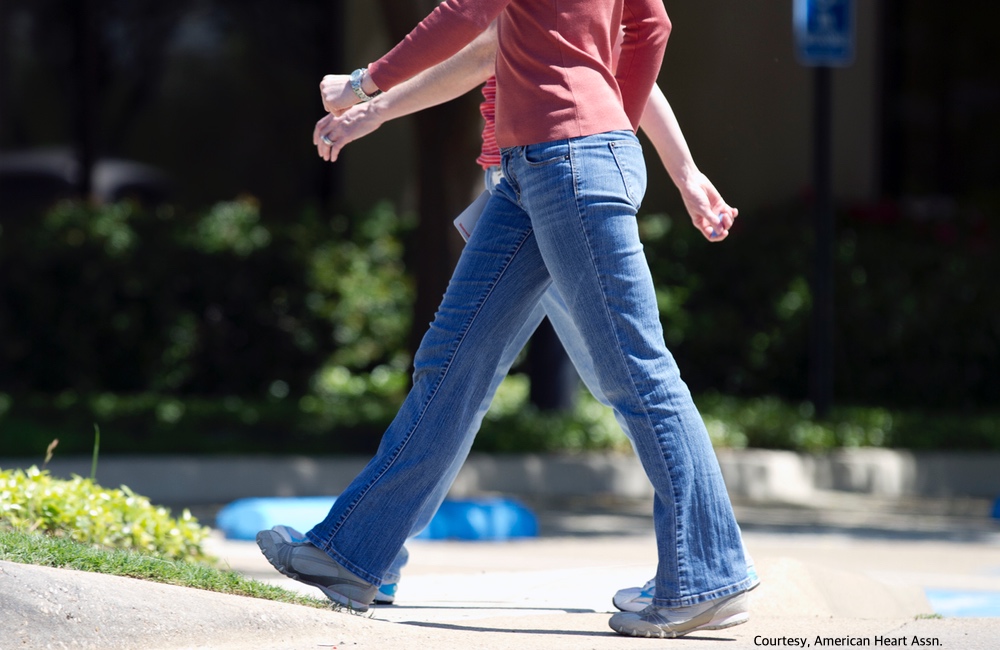Dr. Ali is a Fellow, Geriatrics Division, Saint Louis University School of Medicine, St. Louis, MO. Dr. Ali reports no conflict of interest.
Among seniors, more than half have high blood pressure (hypertension). What is blood pressure? How high is high? And what should you do about it?
Blood pressure is measured in units of mercury (mm Hg) and expressed as a fraction. The top number is the systolic blood pressure (SBP) and is an indicator of the force with which blood pumped from the heart hits the walls of the arteries. The bottom number is called the diastolic blood pressure (DBP) and reflects the pressure that remains in the circulatory system after the force of the ejected blood is spent. So, if you have a blood pressure of 120/80 mm Hg, the "120" is the systolic and the "80" is the diastolic.
The difference between the systolic pressure and the diastolic (for example, 120 minus 80 = 40) is also important and usually ranges between 30 and 60 in normal individuals. When the difference is larger, as we will see, a person may experience episodes of, for example, low blood pressure upon standing (orthostatic hypotension).
The special concern for the elderly is the increased incidence of systolic blood pressure (SBP), the fall of diastolic blood pressure (DBP) and the increased frequency of orthostatic hypotension because of the widened difference between the top and bottom numbers.
The fall in diastolic BP results from decreased resistance in the largest artery, the aorta, because it is stiff and no longer flexible. This so-called decreased aortic impedance, a manifestation of not only aging but also other factors that accelerate arteriosclerosis including a high SBP. Higher SBP, left untreated, may worsen aortic stiffness and perpetuate a vicious cycle.The difference between the systolic pressure and the diastolic (for example, 120 minus 80 = 40) is also important and usually ranges between 30 and 60 in normal individuals.
Another relevant factor is the increased frequency of low blood pressure following meals (postprandial hypotension) and frailty; both relatively preventable. Overall, the reality is that for many individuals their blood pressure is not well controlled.
Blood Pressure Measurement: Proper Technique
It is important that the dimensions of the blood pressure cuff be appropriately sized for each individual. Smaller cuffs on bigger arms, for exampe, may give readings that are inaccurately higher.
Before taking your blood pressure, avoid food, exercise, caffeine and smoking one hour prior to BP measurement. Smoking two cigarettes (3.4 mg nicotine) will elevate BP by 10/8 mm Hg for 15 minutes. Drinking coffee (200 mg caffeine) will elevate BP by up to 10/7 mm Hg for one to two hours. For an accurate blood pressure reading, sit in a warm room for at least five minutes with your arm supported at the level of the heart, for example, resting on a table. Don't let your arm dangle, for this will elevate SBP by 10 mm Hg because of hydrostatic pressure induced by gravity. Make sure the medical staff checks your BP in both arms and then uses the arm with the higher reading for subsequent measurements.
In some older patients, compression of the brachial artery in the arm, from arterial thickening caused by calcification, will cause overestimation of the systolic and diastolic pressures by 10 mm Hg or more.
Table 1.
Risk Factors for Essential Hypertension.
- The relation between hypertension, diet and salt intake was demonstrated by the DASH low sodium trial. Reduction of salt intake combined with DASH (Dietary Approaches to Stop Hypertension) diet led to a drop of BP among individuals with normal blood pressure and among those with high blood pressure.
- Excess alcohol intake
- Family history
- Obesity — the risk of hypertension for moderately obese men is two-fold higher than their peers.
- Hypertension is more common and severe in African Americans.
Diagnosis
The United States Preventive Service Task Force (USPSTF) recommends measurement of blood pressure at each visit for patients over 21 years of age. History should include assessment of risk factors for cardiovascular disease, end organ (e.g., kidney) damage and life style aspects that may be modified — physical activity, alcohol consumption, smoking and dietary habits.
As many as 25% of patients, more so among the elderly compared to the general population, who appear to exhibit mild hypertension at the physician's office, may in fact be prone to medical office examination anxiety ("white coat hypertension"). To avoid this false reading, ask a nurse to check the BP or check your BP at home yourself.
Complications of Hypertension
Atherosclerosis is a major complication of hypertension. Coronary artery disease (CAD) needs special mention, as both systolic and diastolic high blood pressure are risk factors for CAD. Throughout middle and old age, BP is strongly and directly related to death from heart and related blood vessel causes.
Hypertension is the most common risk factor for congestive heart failure (CHF). In hypertensives, the risk of CHF is two-fold in men and three-fold in women. Among individuals aged 40 to 89 years followed for 20.1 years, of those who developed CHF, 91% had a prior history of hypertension. Hypertensive CHF is associated with a poor outcome — only 24% of men and 31% of women survived five years. Enlargement of the left side of the heart [left ventricular hypertrophy (LVH)] predicted high risk of myocardial infarction (MI), irregular heart rhythm (arrhythmia) and death.
Stroke is a complication that leads to high mortality and disability. The Systolic Hypertension Trial in Europe (Syst-Eur) showed that active treatment of hypertension reduced the total rate of stroke by 42%. According to the Melbourne Risk Factor Study, hypertension is the most important risk factor for development of intracerebral hemorrhage.Among individuals aged 40 to 89 years followed for 20.1 years, of those who developed CHF, 91% had a prior history of hypertension.
Findings from the Third National Health and Nutrition Examination Survey (HANES) showed that about 3.0% of civilian, non-institutionalized US population had elevated serum creatinine, probably from failing kidneys, 70% of whom were hypertensive. Among hypertensive individuals with high creatinine, 75% received treatment. However, in only 11% of patients was it possible to reduce their BP to lower than 130/85 mm Hg.
The Syst-Eur trial demonstrated a lower incidence of dementia in treated elderly patients with systolic hypertension. If 1000 patients were treated for 5 years, 19 cases of dementia might be prevented.
Treatment
Many trials have confirmed the benefit of treating hypertension in the elderly. Active treatment reduced total mortality by 13%, cardiovascular mortality by 18%, all cardiovascular complications by 26%, stroke by 30% and coronary events by 23%.
Treatment of hypertension started or changed in only 38% of visits to a physician despite documented hypertension for at least 6 months. The reason for this reluctance on the part of the physician is satisfaction with a high BP.
Goal BP in the Elderly
According to the Systolic Hypertension in the Elderly Program (SHEP), a SBP goal is 20 mm Hg lower if the baseline is between 160 and 180 mmHg and below 160 mm Hg if the initial value is above 180 mm Hg.
Life style modification should be tried first. The Trial of Nonpharmachologic Interventions in the Elderly (TONE) showed that life style modification is effective in lowering the BP in the elderly. Sodium should be restricted to 2.3 g or 6 g of table salt.
Although dietary restriction is an effective method of treatment, it needs to be instituted with care in the elderly because appetite declines with age, and salt restriction can lead to tasteless food and thus weight loss and then low blood pressure upon standing up (orthostasis). Weight loss in obese individuals, together with salt restriction, is especially beneficial.
While moderate alcohol intake of one or two drinks per day reduces cardiovascular risk,34 alcohol consumption greater than two drinks per day leads to hypertension and the effect is dose related.
Table 2.
Life Style Modifications to Manage Hypertension.
| Modification | Recommendation | Approximate SBP Reduction |
|---|---|---|
| Weight reduction | Maintain normal body mass index | 5-10 mm Hg/10-kg weight loss |
| Adopt DASH eating plan | Consume a diet rich in fruits, vegetables, and low fat dairy products with a reduced content of saturated and total fat | 8-14 mm Hg |
| Dietary sodium reduction | Reduce dietary sodium intake to no more than 100 mEq (2.4 g sodium or 6 g sodium chloride | 2-8 mm Hg |
| Physical activity | Engage in regular aerobic physical activity such as brisk walking (at least 30 minutes per day, most days of the week) | 4-9 mm Hg |
| Moderation of alcohol consumption | Limit consumption to no more than 2 drinks per day (1 oz. or 30 ml ethanol [e.g., 24 oz. beer, 10 oz. wine, or 3 oz. 80-proof whiskey]) in most men and no more than 1 drink per day in women and lighter-weight persons | 2-4 mm Hg |
Is There a Drug of Choice?
Because of normally sluggish self regulation as we age, pharmacological therapy should be gentle, start low and go slow, avoiding drugs that may cause hypotension (low blood pressure) upon standing or lying down (postural hypotension).
The Seventh Report of the Joint Committee on Prevention, Detection, Evaluation and Treatment of High Blood Pressure (JNC-7) recommends starting treatment with a thiazide diuretic, as it is effective, cheap and safe. Another advantage of thiazide diuretics in the elderly is the positive calcium balance. The Antihypertensive and Lipid Lowering Treatment to Prevent Heart Attack Trial (ALLHAT) suggested that low dose thiazide diuretics have a better cardiovascular protective effect than ACE inhibitors and calcium channel blockers in patients with risk factors for coronary artery disease such as enlarged left heart (LVH), diabetes mellitus (DM) type 2, previous heart attack, stroke, high blood levels of bad cholesterol, cigarette smoking or other atherosclerotic cardiovascular disease.
The following drugs may be preferable in certain situations:Because of normally sluggish self regulation as we age, pharmacological therapy should be gentle, start low and go slow, avoiding drugs that may cause hypotension.
Angiotensin converting enzyme inhibitors (ACEIs) are preferable in patients with heart failure, in patients with leaky kidneys [proteinuric chronic renal failure (CRF)] and type 1 diabetics with kidney disease. Angiotensin receptor blockers (ARBs) are effective in patients who cannot tolerate ACE inhibitors, in severe hypertension with left heart enlargement and type 2 diabetes with some kidney disease (microalbuminuria).
Beta blockers are preferred in patients with myocardial infarction (MI), as they improve survival. They are beneficial in patients with heart failure DELETION, angina and atrial fibrillation (rapid and irregular contractions of the heart muscle fibers).
Special Patients
Supine Hypertension and Orthostatic Hypotension
This is a difficult situation because treatment of one aspect complicates the other. One option is to treat supine hypertension during the night with a nitroglycerin patch and remove it in the morning before ambulation, though care must be taken in a patient who frequently needs to get up in the night to go to the bathroom.
The Very Old
Currently, the opinion is divided about patients aged 85 years and above. In the August 2003 issue of the Journal of Gerontology, Dr. J.S. Goodwin initiated a debate by reviewing evidence which showed that higher levels of systolic and diastolic blood pressures are associated with increased survival in the very old. This evidence was largely based on two population-based studies of the relationship of systolic and diastolic blood pressure level and 5-year mortality in men and women aged 85 and older.
One study enrolled 83% of the 85 and older population of Tempere, Finland (561 subjects) and the other enrolled 94% of the 85 and older population of Leiden, the Netherlends. In both studies, the chance of 5-year survival is higher in those with a SBP >200 than among those with pressures of 120-140 mm Hg. However, these studies reported all causes of mortality and did not therefore provide a clear picture of the relationship between blood pressure and mortality. Poor health status, for example, was more common in patients with low blood pressure and, after adjusting for health status, the negative effect of low blood pressure disappeared.
The results of the ongoing Hypertension in the Very Old Trial (HYVET) will provide an answer to this debate. In this trial, 2100 patients, aged 80 and older with hypertension, enrolled in indapamide+perindopril vs. placebo groups. Until the study is reported, we need to rely on clinical judgment as we treat very old patients.
ADVERTISEMENT





